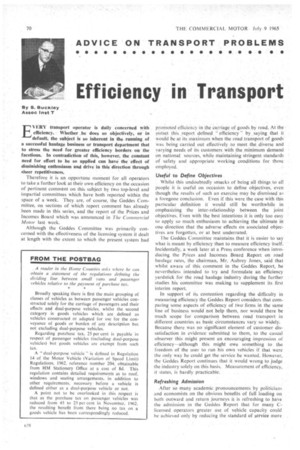FROM THE POSTBAG . A reader in the Home Counties
Page 72

If you've noticed an error in this article please click here to report it so we can fix it.
asks where he can obtain a statement of the regulations defining the dividing line between small vans and passenger
vehicles relative to the payment of purchase tax. * * *
Broadly speaking there is first the main grouping of classes of vehicles as between passenger vehicles constructed solely for the carriage of passengers and their effects and dual-purpose vehicles, whilst the second category is goods vehicles which are defined as vehicles constructed or adapted for use for the conveyance of goods or burden of any description but not excluding dual-purpose vehicles.
Regarding purchase tax; 25 per cent is payable in respect of passenger vehicles (including dual-purpose vehicles) but goods vehicles are exempt from such tax.
A dual-purpose vehicle" is defined in Regulation 14 of the Motor Vehicle (Variation of Speed Limit) Regulations, 1962, reference number 204. obtainable from HM Stationery Office at a cost of 8d. This regulation contains detailed requirements as to roof, windows and seating arrangements. in addition to other requirements. necessary before a vehicle is defined either as a dual-purpose vehicle or not.
A point not to he overlooked in this respect is that as the purchase tax on passenger vehicles was reduced from 45 to 25 per cent in November; 1962, the resulting benefit from there being no tax on a goods vehicle lias been correspondingly reduced.




















































































































